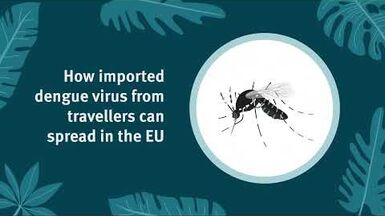Influenza virus characterisation, May 2013
During the 2012–13 season, A(H1N1)pdm09, A(H3N2) and B/Victoria- and B/Yamagata-lineage influenza viruses have been detected in ECDC-affiliated countries. The relative prevalences varied between countries.
Type A and type B viruses have continued to co-circulate in similar proportions.
A(H1N1)pdm09 viruses have been detected at comparable levels to A(H3N2) viruses.
A(H1N1)pdm09 viruses continued to show genetic drift from the vaccine virus, A/California/07/2009, but the vast majority remained antigenically similar to it.
The vast majority of A(H3N2) viruses have been antigenically and genetically similar to cell-propagated A/Victoria/361/2011, the prototype vaccine virus for the 2012–13 influenza season.
Viruses of the B/Yamagata lineage predominated over those of the B/Victoria lineage.
B/Victoria lineage viruses were antigenically similar to cell-propagated reference viruses of the B/Brisbane/60/2008 genetic clade.
Recent B/Yamagata-lineage viruses fell into two antigenically distinguishable genetic clades: clade 2, represented by B/Estonia/55669/2012, and clade 3, represented by B/Wisconsin/1/2010 (the recommended vaccine component for the 2012–13 influenza season).
Executive Summary
The latest issue of ECDC’s monthly series on 'Influenza virus characterisation’ covers the time period from 1 December 2012 to 31 May 2013, spanning the entire 2012-13 season.
It is prepared by the European Reference Laboratory Network for Human Influenza (ERLI-Net). Until June 2013, ERLI-Net was called the Community Network of Reference Laboratories for Human Influenza in Europe (CNRL).
During the 2012–13 season, A(H1N1)pdm09, A(H3N2) and B/Victoria- and B/Yamagata-lineage influenza viruses have been detected in ECDC-affiliated countries. The relative prevalences varied between countries.
The report summarises the findings as follows:
- Type A and type B viruses have continued to co-circulate in similar proportions.
- A(H1N1)pdm09 viruses have been detected at comparable levels to A(H3N2) viruses.
- A(H1N1)pdm09 viruses continued to show genetic drift from the vaccine virus, A/California/07/2009, but the vast majority remained antigenically similar to it.
- The vast majority of A(H3N2) viruses have been antigenically and genetically similar to cell-propagated A/Victoria/361/2011, the prototype vaccine virus for the 2012–13 influenza season.
- Viruses of the B/Yamagata lineage predominated over those of the B/Victoria lineage.
- B/Victoria lineage viruses were antigenically similar to cell-propagated reference viruses of the B/Brisbane/60/2008 genetic clade.
- Recent B/Yamagata-lineage viruses fell into two antigenically distinguishable genetic clades: clade 2, represented by B/Estonia/55669/2012, and clade 3, represented by B/Wisconsin/1/2010 (the recommended vaccine component for the 2012–13 influenza season).




